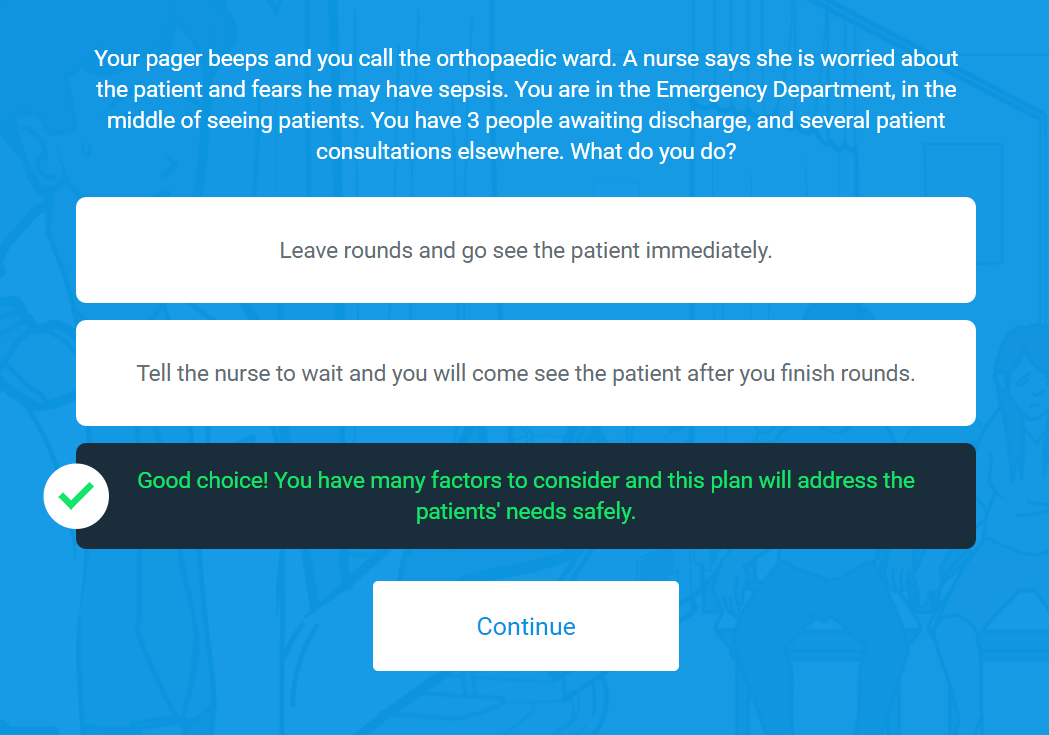Resilience in systems
- Home
- Resilience
- Resilience in systems
Safety is a priority in healthcare. In recent years, research efforts have focused on reducing error rates and increasing safety for patients in hospitals. However, concerted efforts to improve safety have not resulted in a meaningful change in error rates[1]. New ideas are emerging from the field of resilience engineering, which hold promise to impact safety in hospitals[2]. An important concept in resilience engineering is organisational resilience, which can be defined as the ability of a system to adapt safely to pressures[3]. There is potential to understand how organisational resilience is created by studying the work of healthcare professionals.
To learn more about how healthcare professionals make decisions, I led a collaboration to create Resilience Challenge, a new video game about safety in healthcare. As the project manager for this international collaboration, I brought together researchers, clinicians, developers, and artists, to create a video game that brought cutting edge safety research to life. I am using the learning from this game in my PhD thesis, which is forthcoming.

Resilience Challenge was designed to introduce new ideas about patient safety to clinicians. Members of the public can also play, to learn more about pressures in hospitals. Players guide a patient’s journey through a hospital, by making choices during a series of scenarios. Players receive feedback about their choices, and must consider how each choice impacts patient safety.

This research is funded by King’s College London, and the Canadian Institutes of Health Research. Resilience Challenge was funded and supported by the Cultural Institute at King’s College London, and was developed with our industry partners, Karman Interactive Ltd.
Learn more about Resilience Challenge from CARe, WeNurses, Injectable Orange, and King’s Health Partners.
For more information, please see:
[1] World Health Organization (2014) 10 facts on patient safety. Vol. 2016 World Health Organization
[2] Hollnagel, E. (2012) A Tale of Two Safeties. 1-13.
[3] Ross, A. & Anderson, J. (2015) Mobilizing resilience by monitoring the right things for the right people at the right time. In Resilient health care Volume 2: The resilience of everyday clinical work, Vol. 2 (Wears, R. L., Hollnagel, E. and Braithwaite, J. eds.) Ashgate, Farnham, Surrey, pp. 235-248.
